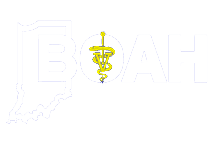Bovine Tuberculosis in Indiana FAQs
What is Bovine Tuberculosis (TB)?
Bovine TB is a contagious, chronic bacterial disease caused by Mycobacterium bovis. The infection commonly involves the lungs, but it may spread to other organs. Animals often do not show signs until the infection has reached an advanced stage.
What species are susceptible to Bovine TB?
Most warm-blooded animals, as well as humans, can get the disease. Some species, such as horses and sheep, are less susceptible.
How is the organism that causes TB transmitted?
Bovine TB is primarily spread through direct contact with an infected animal from respiratory and digestive excretions.
Will the organism that causes TB live in the environment? Can the environment be tested?
Mycobacterium bovis, the bacteria that causes bovine TB, likes a moist, cool environment and can survive outside of a body for several days in ideal conditions. Water is not an environment that will sustain the bacteria. Sunlight and temperature extremes will kill the organism. Water run-off has never been shown to be a source of infection. Indiana DNR and BOAH have conducted environmental testing on farms that had bovine TB infected animals.
Indiana's Bovine TB History
Indiana has officially held a bovine tuberculosis-free status since 1984 with the U.S. Department of Agriculture. Under federal guidelines, that status remains.
Bovine TB was detected in Southeast Indiana in beef cattle and one cervid farm between 2008 and 2016.
Southeast Indiana Bovine TB Timeline
2008: Detected in a single beef cow, no other positives were found.
2009: Detected in a cervid herd. The herd was depopulated.
2010: Detected in two beef animals. The herd was depopulated.
2011: Detected in one beef cattle herd. The herd was depopulated.
2016: Detected in two different beef cattle herds. The herds were depopulated.
Currently, Indiana has no known cases of bovine TB or farms under quarantine for the disease.
How long would TB-affected properties be under quarantine?
Herds considered exposed to TB remain under quarantine until all exposed animals are tested. Any herd in which a positive is found will remain under quarantine until the property has met all the requirements set forth by the USDA as part of the federal disease eradication program.
Where did the bovine TB that was discovered in Southeast Indiana come from?
The source of infection is undetermined. On the affected premises no direct links were found through cattle and captive cervid movements. The TB cases in Franklin and Dearborn Counties from 2008 to 2016 are the same cattle-origin strain suggesting that wildlife in the area may have contributed to its spread.
The investigative process (referred to as epidemiology) requires reviewing purchase, sales and breeding records for all cattle and cervid operations linked to the initially identified herds, including purchases of animals made several years ago.
TB is a slow-growing disease, and the animals involved could have been exposed years ago. The possibility exists that the ultimate source for infected herds may never be definitively identified.
An important detail regarding the TB found in Southeastern Indiana is that genetic testing shows the strain of TB discovered in this area is different from the strain found in Michigan.
What surveillance testing is being done by Indiana DNR and BOAH?
The Indiana Department of Natural Resources (DNR) will test deer and other wildlife species that are showing signs of bovine TB. Information about DNR's surveillance testing is online: www.in.gov/dnr/fish-and-wildlife/wildlife-resources/wildlife-diseases-in-indiana/bovine-tuberculosis-btb/
Hunters: If you observe lesions in the chest cavity of hunter harvested deer, contact the Indiana State Board of Animal Health (BOAH) at: 877-747-3038
Between 2009 and 2019, BOAH and DNR tested hunter-harvested wild white-tailed deer near the farms in Southeastern Indiana where TB-positive animals were housed. Small mammals (like raccoons) were also trapped and tested on the affected sites.
Is Indiana beef safe to eat?
Yes. Beef processed at state or federally inspected facilities are evaluated for any signs of illness before slaughter. After slaughter, the carcass and internal organs are inspected for any signs of disease, such as tuberculosis, that would make the meat unacceptable for human consumption.
The cases of TB in cattle from Franklin and Dearborn counties were identified through routine inspection when cattle were sent to a slaughter plant. The information was relayed back to the Indiana State Board of Animal Health for follow up investigations. This finding indicates that the U.S. food safety system is effective and consumers can be confident in the meat they purchase.
With bovine TB in the upper portion of the lower peninsula of Michigan for more than 20 years, why have BOAH and DNR not tested animals sooner?
BOAH and DNR have been very concerned about the potential for the spread of TB into the state of Indiana. That is why the two agencies have an ongoing public education effort to raise awareness of what TB looks like in deer. Information has consistently appeared in the Indiana Hunter and Trapper Guide, including guidance for hunters to call for reporting and requesting assistance. Most meat processing facilities, meat inspection staff members and taxidermists have been provided with color photo reference cards to help identify signs of TB, should they handle potentially infected carcasses. This passive surveillance system results in numerous hunter calls to BOAH each year and sampling of any suspect animals. Hunters statewide are encouraged to contact BOAH to report any unusual appearance of their harvested animals.
Indiana has had TB testing requirements for several years for all live cervids imported into or moved within the state. Breeding cattle imported into Indiana from high-risk areas require a negative TB test prior to entry.
